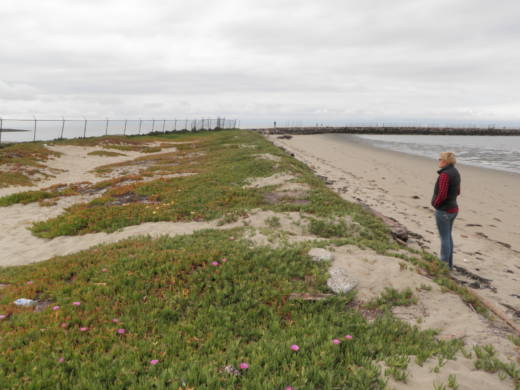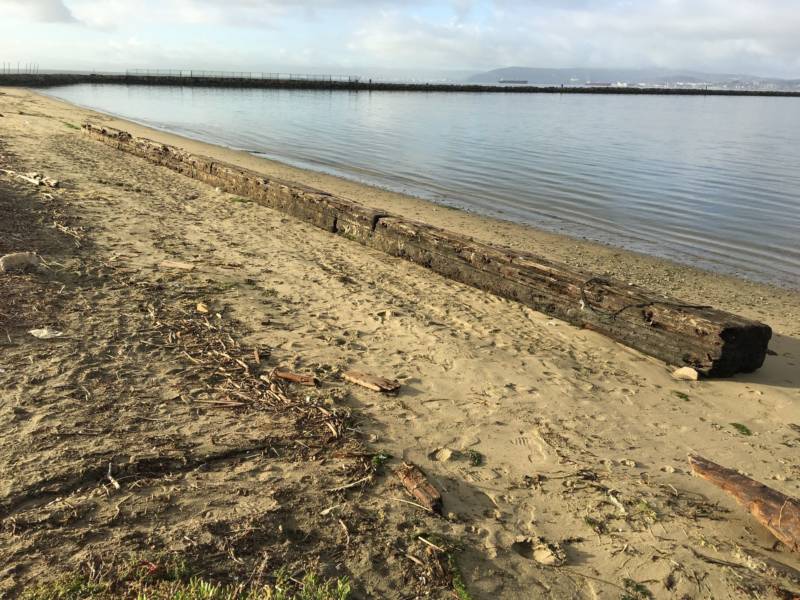This is part of our ongoing series about where taxpayer funds from 2016’s Measure AA to restore the San Francisco Bay are going. Find all the stories here.
In the city of Alameda, there’s a beach so small you might miss it. In fact, I did when I first tried to find it. All 2 acres of it.
“It’s a hidden gem but the locals know it very well,” says Joe Sullivan, program manager for the Encinal Dune Restoration and Shoreline Stabilization Project. “It’s a popular fishing spot. And it’s also a really popular beach for non-motorized boats.”
Encinal Beach is on the former naval weapons station at Alameda Point. Sullivan says that, back in the day, the Navy built a structure called a breakwater to protect its base from the bay, and in a happy accident, the breakwater created a small beach.
Over the years, this beach formed sand dunes. Sullivan says dunes like these have largely disappeared from the Bay Area because of urbanization.


